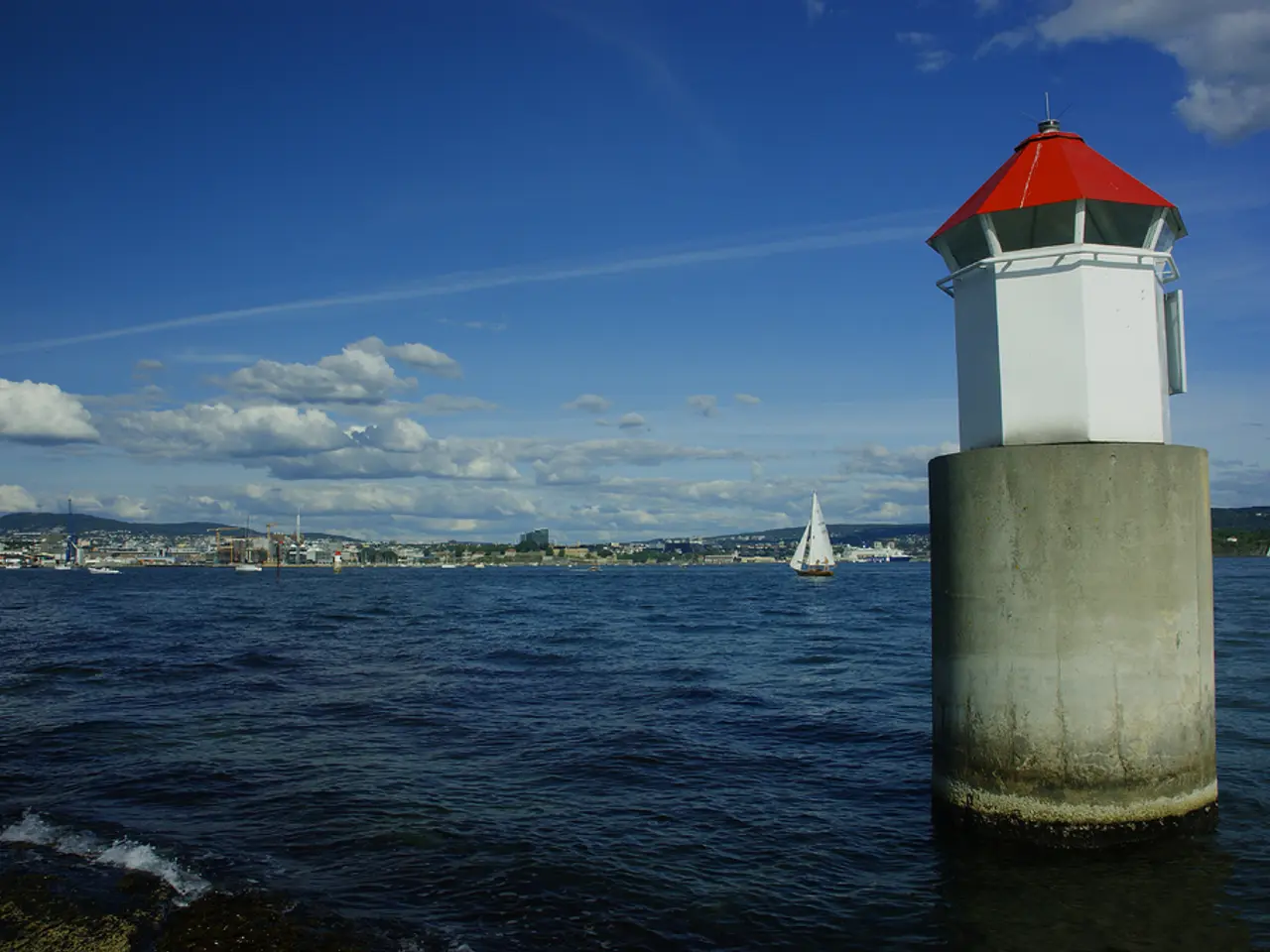Exploring the Coastal City of Kamakura, with Emphasis on its Maritime Landscape
The picturesque city of Kamakura, Japan, plays host to the annual Reitaisai festival, a three-day event that celebrates the city's rich history and cultural heritage. Held from September 14 to 16 each year, the festival honours the founding of the Tsurugaoka Hachimangu shrine and its deity, Hachiman, the god of war and protector of the Minamoto clan.
A key highlight of the Reitaisai is the traditional misogi purification ritual, where shrine priests bathe at dawn on Yuigahama Beach, a practice steeped in ancient Shinto cleansing traditions. This ritual, with its roots dating back to the founding of the Kamakura shogunate by Minamoto no Yoritomo, continues to this day, symbolising the festival's deep historical significance.
The coastal setting of Kamakura and Yuigahama is also home to local sea-related customs. Fishing boats can be seen setting out at dawn to catch whitebait or harvest wakame seaweed, while surfers gather to catch the morning waves. This harmonious blend of historic shrines and temples with a seaside location makes Kamakura a unique destination, offering visitors a glimpse into the region's maritime traditions.
The Reitaisai festival embodies the spiritual, historical, and maritime traditions unique to Kamakura. It is more than just a religious event; it is a living testament to the city's past, present, and future.
Kamakura, one of Japan's three major former capitals, is also known for its popularity in modern marine sports. The Shōnan coast, which includes Kamakura, is a haven for yachting, surfing, and other water activities. During spring low tides, Wakaenoshima attracts families for rock pooling, adding to the area's appeal.
The city is also famous for its fireworks displays during the summer months. The Kamakura fireworks, which feature unusual underwater fireworks, are a spectacle not to be missed. Launching the underwater fireworks can be challenging due to ocean waves, but the resulting explosion of colour as they float to the sea's surface is truly mesmerising.
Wakaenoshima, the oldest surviving artificial harbour in Japan, was constructed in 1232 during the Kamakura period. Today, only rounded stones remain, serving as a reminder of the area's maritime past.
In conclusion, the Reitaisai festival in Kamakura offers visitors a unique blend of ancient tradition and modern vibrancy. From the traditional misogi purification ritual to the contemporary surfing scene, the festival embodies the spiritual, historical, and maritime traditions that make Kamakura a must-visit destination.
A visitor to Kamakura can capture stunning photos of the Reitaisai festival, showcasing a blend of ancient tradition and modern vibrancy, including the misogi purification ritual and the surfing scene. To reinforce the city's outdoor-living culture, one could explore home-and-garden settings like Wakaenoshima, the oldest surviving artificial harbor, while also discovering popular spots for sports activities like yachting, surfing, and rock pooling on the Shōnan coast. During the travel to Kamakura, car enthusiasts may enjoy the scenic drive along the coastline leading to the city.






